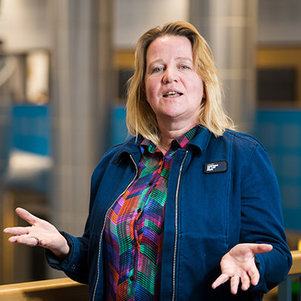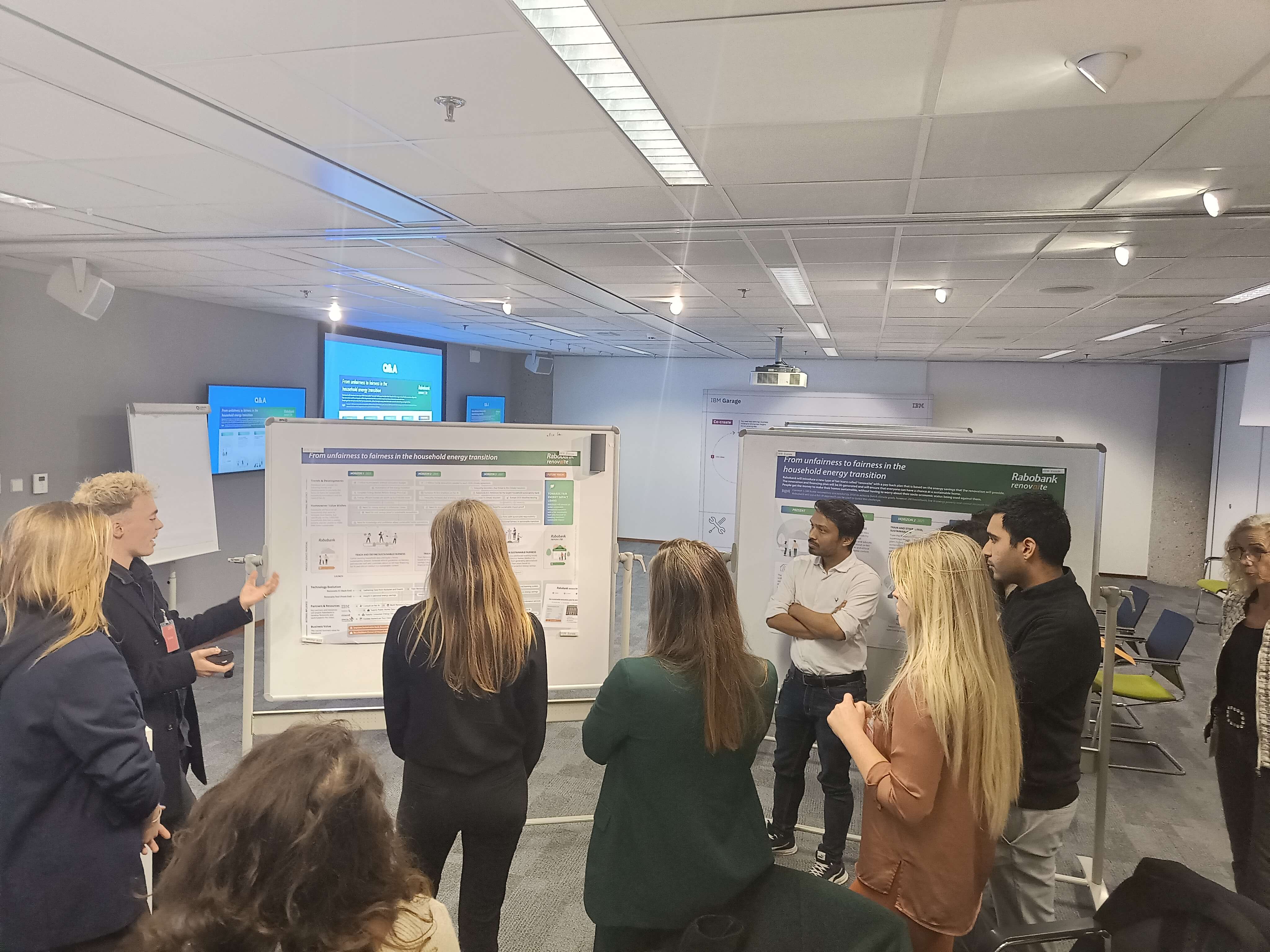Design Roadmapping for Trusted AI
Proactive designing for future values with IBM
Splendid design roadmapping presentations at IBM Amsterdam marked the end results of the Strategic Product Design (SPD) MSc students’ projects on Trusted AI for Banking.
It was liberating to explore how design roadmapping can be used for a trusted AI strategy. The students captured not only current values, but also the arrising tensions, and future ones. These layed the foundation for an AI innovation aligned with ethical principles and the bank’s strategy. The students excellently showed in this experiment, that design roadmapping can be a valuable method for Trusted AI development in industry. A true first of a kind!
– Dasha Simons, Managing Consultant Trusted AI (IBM)
With the rapid growth of AI, comes the simultaneous rise of ethical issues. As AI begins to play a more prominent role in transforming high stake decisions (e.g. credit scoring systems), industry endevour to create more trustworthy AI that is more privacy sensitive, transparent, explainble, robust, and fair. As of right now, this is primarily being done via a risk-mitigation approach and with a tech-centric focus. However, we our master’s students to explore a novel approach from a design perspective, including human and societal needs.
“We started a journey of discovery to learn by experimenting on how the design roadmapping approach suits a ‘Design for Trusted-AI’ strategy instead of an Innovation strategy that commonly provides the roadmapping context. The IBM use case concerned an AI loan service for a bank of their choice”. - Assistant Professor Lianne Simonse, course coordinator at IDE
Dasha Simons asked the 12 student teams to take a proactive stance on trusted AI and develop a vision on desired future action, while solely using a risk mitigation approach. Questions such as – which values should be prioritized now and how will the future values change and adapt in the coming 5-10 years? – were key!
To safe guard the learning process and to ensure the latest in design expertise on digital platforms and future value design were used, we brought in Aniek Kempeneer (IDE's Best Graduate of 2022). Aniek lectured and coached many of the teams while they designed their roadmaps.
What did everyone collectively learn?
- Design roadmapping offers a method for thinking about desired future values over time
All student teams designed a future vision, with certain ethical values at its core. One team created a future vision that impacts energy poverty via ‘Fair Energy Impact loans’. In this situation, a sustainable transition of a household is supported with loans that are independent of income and risk mitigation, but that depend on the house and the energy bill savings for Rabobank.
“Captivating to see that new service designs become part of Trusted AI strategies and can even take a slightly activist angle. Like the example in which fairer loans with an AI-generated pay-back plan are distributed based on the energy savings a house renovation will provide.” - Dasha Simons
- Align AI values with the company’s strategy
Another team designed the vision of “Empathic AI for Financial wellbeing 2030”. Wherein the chat-bot Anna of ABN AMRO is transformed into an empathic loan advisor. This team aligned closely with ABN AMRO’s corporate values of care and collaboration. All of teams incorporated company values into their projects. This allowed for the creation of AI services that aligned not only with the ethical principles, but that the strategies of the companies. This can provide a novel way to navigate and provide design guidance in the grey spaces of Trusted AI development, when right and wrong are not clear.
- Social service innovations become part of Designing for Trusted AI
Designing with future values stimulated students to imaginatively prototype these values across three horizons and map new AI service innovations over time. One of the presenting teams prioritised and focused on the values of equality and transparency in AI enabled loan applications of a fintech banks. Their future vision design: “By 2027, the bank will facilitate an equal peer-to-peer lending platform, in which entrepreneurial passion within Generation Z is stimulated.” These designers connected a crowdfunding community around entrepreneurial passion and mapped a transformation into a peer-to-peer service lending platform.
An important reflection on our ‘design doing’ concerns the inherit shaping of social service innovations into the Design for Trusted AI corner stone view.
- Lianne Simonse
Next to the purpose to align with trusted AI principles and the strategic company values, the design roadmapping process laid out a first foundation for fruitful AI service innovations!
With a special acknowledgement to the presenting Design Roadmapping teams:
- ‘Fair Energy Impact loans’: François Prévot, Maud Pieterse, Yuqing-Cindy Wu & Zora Schiferli.
- ‘Empathic AI for Financial wellbeing’: Fleur van de Klashorst, Yash Khinvasara, Xiaoyu Che & Meng Cai.
- ‘Equal peer-to-peer lending platform’: Sophie Cleton, Tijn Raes, Jasmijn Verhoef, Shaojing Zhang & Gioia Benini

Lianne Simonse
- +31 (0)15 27 89054
- L.W.L.Simonse@tudelft.nl
-
Room 32-B-4-050
"Creativiteit is geen kunst!"
